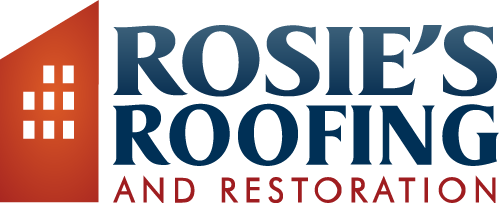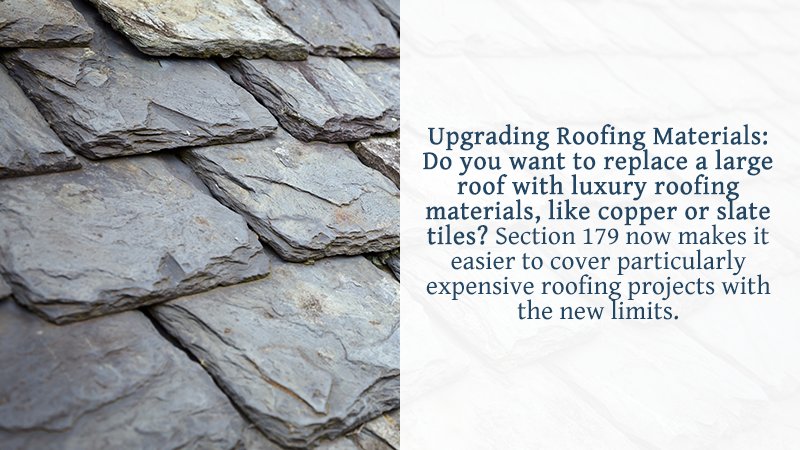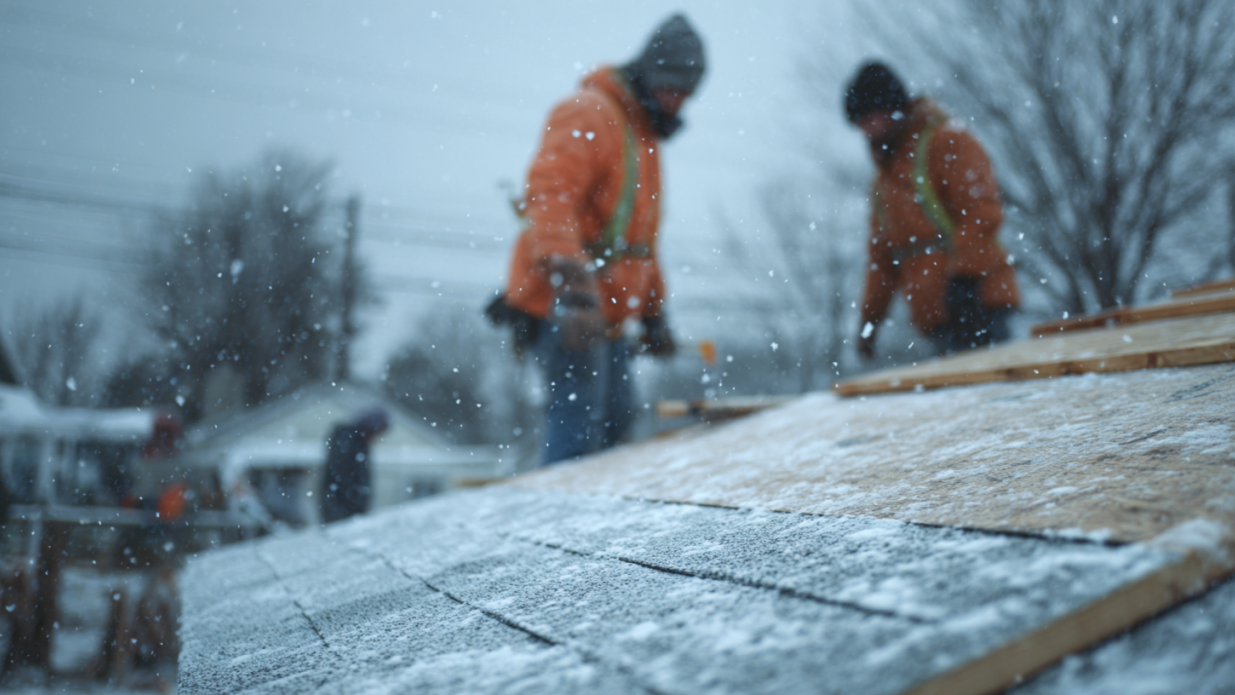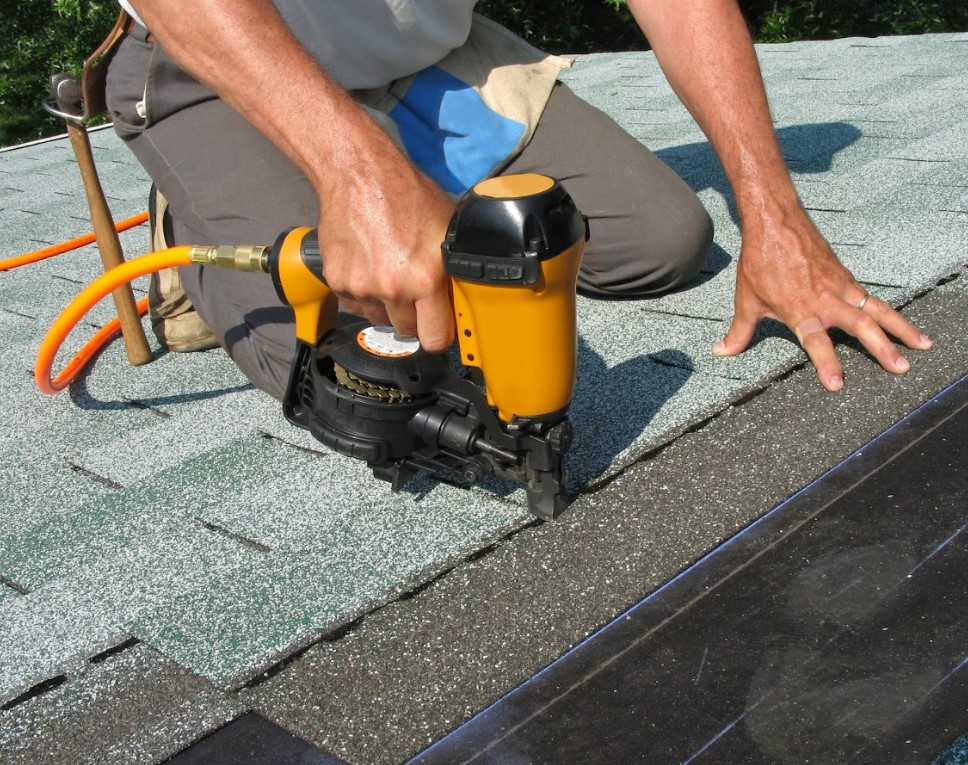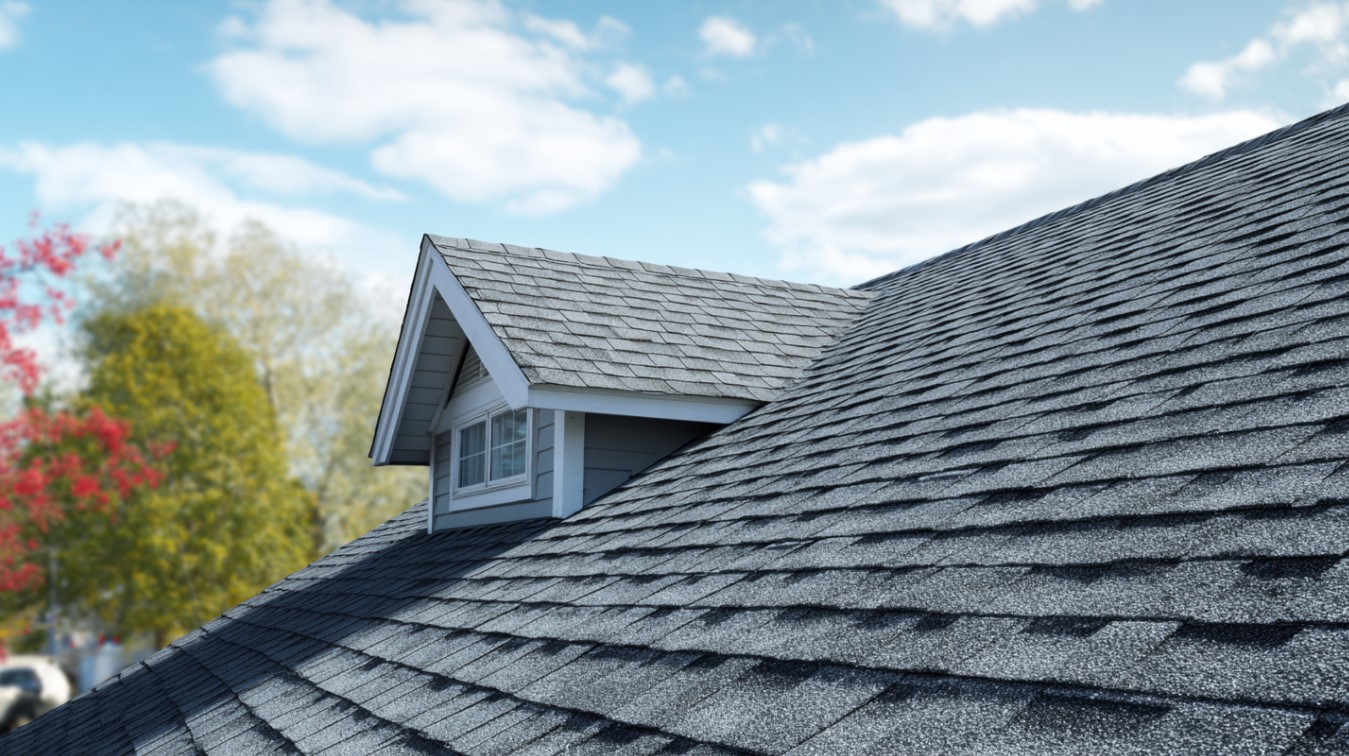Section 179 is an important part of the tax code for roofing professionals — and anyone else who has a roofing project in mind! This Section allows a taxpayer to immediately expense important roofing costs of qualifying real property, rather than depreciating the addition across years.
Immediate expensing has a range of benefits, as your professionals or tax software can explain. It’s often used to control recorded revenue and reduce payments on taxes, which means you could end up saving a lot of money. Even better, Section 179 was recently expanded to be even more beneficial to taxpayers. Here’s what you need to know!
Section 179 Expansion
First, the number of improvements and commercial roof projects that Section 179 can cover for expensing has been expanded. This is particularly important because it means more types of roofing projects can qualify for expensing, and large roofing projects can expense more than they could before. The new version now includes improvements to roofs, heating ventilation, air conditioning, fire protection, and alarm systems. As you can see, that covers most of the improvements and replacements that usually made to rooftops!
New Expensing Limits
Section 179 was also updated with improved expensing limits. Specifically, the expensing limit has been doubled from $500,000 to $1,000,000, and the phase-out threshold has been increased to $2,500,000. These new limits will apply to properties “placed in service” after December 31, 2017. At first, this may seem to only help particularly expensive roofing projects, but you’d be surprised how quickly roofing valuations can rise, especially for larger projects.
Bottom Line On Roof Expenses
These changes make it easier to expense a variety of roofing projects, especially large roofing projects that may include work to many different parts of the roof. For example:
- Full Roof Replacement: Older or heavily damaged rooftops may need to be fully replaced to protect or enhance the building. This can be a very expensive project, and the new Section 179 makes it easier to control how you record those expenses.
- Replacing Roof Insulation Materials: You can rest assured that the roofing insulation materials will be covered under Section 179 for a new project. Replacing underpayments can be a large project, and may involve replacing a number of other materials depending on the damage, so Section 179 may be particularly useful here.
Upgrading Roofing Materials: Do you want to replace a large roof with luxury roofing materials, like copper or slate tiles? Section 179 now makes it easier to cover particularly expensive roofing projects with the new limits. - Historical Restoration: Historical restorations can be time-consuming and expensive: Check to see what part of the restoration can be expensed under Section 179 if necessary.
Have questions about a particular roofing project? Contact us today at Rosie’s Roofing and Restoration, a trusted roofing company to find out more, request an estimate, and check out our reviews!
Call today to schedule a free consultation! Contact Us
